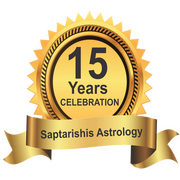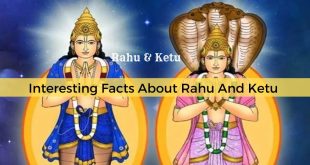Related Articles
– Editor ]
Varaha Mihira occupies an unrivalled niche in the three ramifications of Vedanga Jyotisha. It wouldn’t be a hyperbole if Varaha as an effulgent luminary is considered as one in the galaxy of our ancient seers of divine wisdom.
I gratefully avow that such an extraordinary genius who had handed over an unequalled treasure of astrological lore to the posterity, should be remembered for good as a mark of grateful reciprocity.
Now in this article I would like to attempt a brief reminiscent review of Varaha Mihra’s period, place and works. It appears as though Varaha was averse to giving importance to his own bio-data, as he made casual references of his times indistinctly in the course of his works.
That is why the period in which he actually flourished is ambiguous and thus becomes the topics of controversial discussions, made by the historians, critics and astronomers of later times. Some placed him in the 6th century A.D. while some others ardently argued that he should belong to the 1st century B.C.
Varaha Mihira makes mention of Saka 2526 in Brihat Samhita.
आमन् मघासु मुनयः शासति पृथ्वी युधिष्ठिरे नृपतौ।
षड् द्दिकपच द्वयुतः शक कालस्तस्य राज्ञश्र॥
āman maghāsu munayaḥ śāsati pṛthvī yudhiṣṭhire nṛpatau |
ṣaḍ ddikapaca dvayutaḥ śaka kālastasya rājñaśra ||
During the reign of Dharma Raja, the Seven Sages were in Magha constellation. After 2526 years from the reign of Dharma Raja, saka begins. Vishnu Purana states that Kali enters with the demise of Lord Krishna. Dharma Raja reigned for 37 years and left for Himalayas for penance. Kali begins from 3102 B.C. It means that Dharma Raja reigned from 3139 B.C. to 3102 B.C. (3102 + 37 ). Bhavishya Purana states that the Seven Sages are in Aslesha after 25 years from the begin of Kali. Hence the seven sages moved in Magha from 3177 B.C. to 3077 ( the seven sages move 100 years in each constellation 3102-25 = 3077 and on adding 100 years we get 3177 ). It is also mentioned that Pandavas died in 3076 B.C. Thus 3076 – 2526 = 550 B.C. and 550 -427 = 123 B.C. is the saka referred to by Varaha Mihira. This 427 Saka was mentioned by Varaha in the context of Aharganana in his Panchasiddhantika.
सप्ताश्वि वेद संख्यं शककलमपस्य चैत्र शुक्लादौ।
अर्घास्तमिते सुर्ये यवनपुरे सौम्यदिवसाध्ये
saptāśvi veda saṁkhyaṁ śakakalamapasya caitra śuklādau |
arghāstamite surye yavanapure saumyadivasādhye
Since Salivahana Saka is deemed to have commenced from 78 A.D. the period referred to above which means 427 saka would 505 AD (427 + 78 ). Thus it is likely Varaha might have flourished in the first half of 6th century A.D. But this opinion is refuted by the critics. Varaha did not clearly declare that the sukla referred to is Salivahana Saka; Chaitra sukla of 428 saka does not coincide with Monday. It would be unwarranted vandalism if however सोम is interpolated in the place of सौम्य. Thus each began to surmise in his own way, whether the saka would be Yuddhishthira, or Buddha or Vikramaditya and attempts are made by their own astronomical calculations to place Varaha Mihira in different periods.
Kalidasa in his Jyotirvidabharana, makes mention of reputed Varaha Mihira among the nine gems in the court of Vikaramaditya.
ख्यतो वराहमिहिरो नृपतेः सभायां रत्नानि वै वररुचिः नव विक्रमस्य ।
khyato varāhamihiro nṛpateḥ sabhāyāṁ ratnāni vai vararuciḥ nava vikramasya |
And he also writes the date of his composition as Vaisakha of Kali 3067. Hence it would be 35 B.C. by deducting 3067 from 3102 B.C. the begin of Kali. Thus it comes to our understanding that Varaha belongs to the 1st century B.C. Bhattothpala, the reputed commentator of Brihat Jathaka, wrote the date of his completion of his work.
वस्वष्टाष्टमिते शके कृतेय विवृतिममा।
vasvaṣṭāṣṭamite śake kṛteya vivṛtimamā |
It means that this work is completed in 888 saka. Thus it comes to 966 AD. (888 + 78). But the critics cite 2526 saka. Thus it would be 312 AD. (3102 -2526 = 576, 888-576 = 312 AD). Now they argue whether it would not be absurd to say that Varaha lived in the 6th century AD., while his commentator lived in 312 AD., that is 300 years before Varaha Mihira. But let us examine Varaha’s own declaration of Aryabhatta the best known astronomer.
लंकार्धरात्र समये दिन प्रवृत्ति जगाद चार्यभटः ।
भूयः स एव चार्कादयात् प्रभुत्ताह लंकायां॥
laṁkārdharātra samaye dina pravṛtti jagāda cāryabhaṭaḥ |
bhūyaḥ sa eva cārkādayāt prabhuttāha laṁkāyāṁ ||
Varaha reveals the contradictory statements of Aryabhatta as regards the beginning of solar day. Hence it is quite evident that Varaha was either a contemporary of Aryabhatta or flourished later. Aryabhatta declared his birth details in his Aryabhateeyam – Kalakriya pada.
षष्ट्यब्दानां षष्टिर्यदा व्यतीताः त्रयश्च युगपादाः ।
त्र्यधिका विंसतिरब्दाः तदेह मम जन्मनो ऽतीताः॥
ṣaṣṭyabdānāṁ ṣaṣṭiryadā vyatītāḥ trayaśca yugapādāḥ |
tryadhikā viṁsatirabdāḥ tadeha mama janmano ‘tītāḥ ||
This tells us that Aryabhatta was 23 years old after 3600 years of Kali. We find no mention of Saka in the above mentioned authority. Hence the controversy of Saka does not arise. The verse actually means that after the elapse of three yugas, after 3600 years ( 60 x 60 ) of Kali, he was 23 years of age. Then his birth was 476 AD. (3600 – 3102 BC = 498 AD; 498 – 23 = 475 AD ). Then it goes without saying that Varaha belongs to the period of AD and not to the period of BC.
But here some in their anxiety to write their own manipulate to place him in BC by their erratic calculation and by their ignorance of Sanskrit Grammar. Taking 60 for the first word षष्टि, they interpret for the second षष्टि six to declare 360 years ( 60 x 6). But षष्टि means sixty but not six and षष्ठ or षष्ठि means the sixth and not six. If however षष्ठि is mistaken for षष्टि (sixty); that is 10 ( 60 x 1/6 = 10). Either way the anxious critics are wrong. Because in the first interpretation wrong meaning of the word is carried and in the second interpretation, grammar rules of Sanskrit do not permit because of the word षष्ठि in singular number and व्यतीताः in plural number.
As from the authority of Aryabhatta, the doubt that Varaha belongs to the period of AD is not cleared and the period of Varaha remains still controversial and undecided.
Varaha’s birth place: The following verse in Brihatjathaka, gives us some ideas of Varaha’s birth place and some other details.
आदित्यदास तनयस्तदाप्त बोधः कापित्थके स वतृ लब्ध वर प्रसाद।
आवन्तिको मुनिमता न्ववलोक्य सम्यक् होरा वराहमिहिरो उचिरा चकार॥
ādityadāsa tanayastadāpta bodhaḥ kāpitthake sa vatṛ labdha vara prasāda |
āvantiko munimatā nvavalokya samyak horā varāhamihiro ucirā cakāra ||
He was the son of Aditya Dasa. He got education from his father. He was the native of village Kapittha. He got blessings of the Sun-God. He was Avantika. After having thoroughly examined the texts of ancient seers he wrote Hora Sastram. Some think that Kapithaka was in Ujjain. Some think that Varaha was from Kapithaka, a village in some part of our country came and settled in Ujjain. Some others think that it is not Kapithaka but Kapilyaka which is same as Kalapi at present in Uttar Pradesh. Some surmise that Kapitthaka is none other than Kayatha near Ujjain. Some take it as Kapitthala and opine that Kapitthala was his gotram, since he expressed himself to be an Avantika.
Varaha’s works:-
- Siddhanta : Pancha Siddhantika
- Samhita – Brihat Samhita, Samasa Samhita
- Hora – Brihat Jathakam, Laghujatakam, Brihadyatra, Yogayatra, Briahd Vivaha Patala.
Pancha Siddhanta was his first composition and Brihad Samhita waws his last.
It is thought by some that like Panini in Sanskrit Grammar, like Manu in Civil Law, and like Chanakya in politics, Varaha Mihira was acclaimed as great in Vedanga Jyotisha. He is considered as incarnation of Sun-God, as Bhattothpala expressed which is as follows.
यश्छास्त्रं सविता चकार विपुलैः स्कन्धैः त्रिषभः ज्योतिष तस्योच्छिति भयात् पुनः कलियुगे संसृत्य यो भूतले।
भूयः स्वल्पतरं वराहमिहिर व्याजेन सर्वं व्यधात् इत्यं यं प्रवदन्ति मोक्षकुशज्ञाः तस्मै नमो भास्वते॥
yaśchāstraṁ savitā cakāra vipulaiḥ skandhaiḥ triṣabhaḥ jyotiṣa tasyocchiti bhayāt punaḥ kaliyuge saṁsṛtya yo bhūtale |
bhūyaḥ svalpataraṁ varāhamihira vyājena sarvaṁ vyadhāt ityaṁ yaṁ pravadanti mokṣakuśajñāḥ tasmai namo bhāsvate ||
 Saptarishis Astrology Magazine Into Creating Astrologers
Saptarishis Astrology Magazine Into Creating Astrologers






